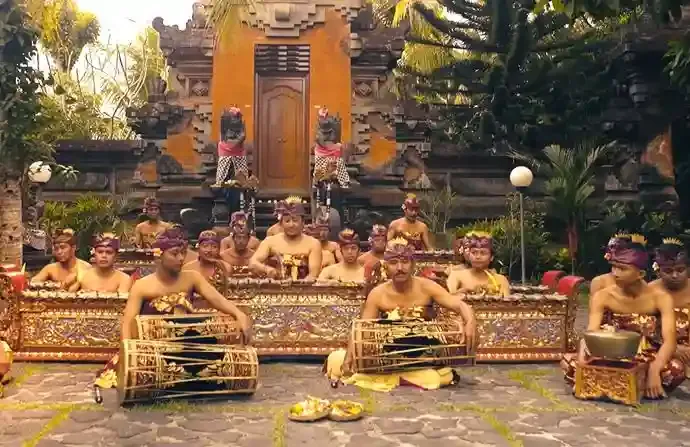Gamelan is a traditional ensemble of musical instruments, primarily found in Indonesia, especially in the islands of Java and Bali. It typically includes a variety of percussion instruments such as metallophones, xylophones, drums, gongs, and bamboo flutes, as well as sometimes including stringed instruments and vocalists.
The gamelan music is highly structured and is based on a system of tuning and composition that is specific to each individual ensemble. The intricate interplay of the various instruments creates a rich and complex texture of sound that is often described as hypnotic and mesmerizing.
Gamelan is an integral part of Indonesian culture and is used for a variety of purposes, including religious ceremonies, traditional dances, and other social events. It is also recognized as a significant art form and has been studied and performed by musicians around the world.
Here are some additional details about Gamelan:
- History: The origins of Gamelan can be traced back to the ancient Javanese courts of the 9th century, where it was used for royal ceremonies and entertainment. Over time, the music evolved and spread to other parts of Indonesia, becoming an important part of the culture and traditions of the region.
- Instruments: The Gamelan ensemble typically consists of instruments made from bronze, iron, bamboo, and wood. The most common instruments include metallophones (such as the saron and gender), gongs (such as the gong ageng and kempul), drums (such as the kendang), and flutes (such as the suling). Each instrument is played with a mallet or stick, and the musicians work together to create a cohesive, rhythmic sound.
- Tuning: The tuning system used in Gamelan music is known as slendro or pelog, and is based on a series of pentatonic or heptatonic scales. Each instrument is tuned to a specific pitch within the scale, and the tuning can vary between different Gamelan ensembles.
- Repertoire: The repertoire of Gamelan music includes a wide variety of styles, including classical court music, folk music, and modern compositions. Many Gamelan pieces are based on specific themes or stories, and are accompanied by dance or puppetry.
- Cultural significance: Gamelan music is an important part of Indonesian culture and is used for a wide variety of occasions, including weddings, funerals, and religious ceremonies. It is also recognized as an important art form and has been studied and performed by musicians around the world. In 2019, Gamelan was added to UNESCO's List of Intangible Cultural Heritage of Humanity.

